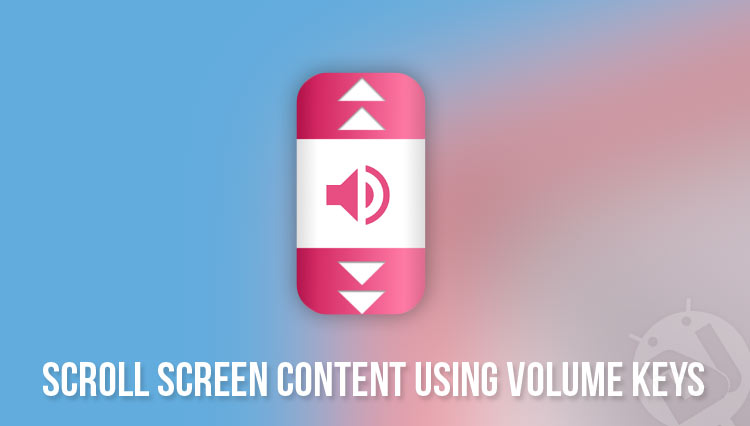

- #Volume scroll pc how to#
- #Volume scroll pc update#
- #Volume scroll pc windows 10#
- #Volume scroll pc windows#
Keep in mind it's a pretty large update - it'll take time to download, and the installation itself can take around half an hour for most setups.
#Volume scroll pc windows#
To do that, open Windows Update and it'll start downloading (Start -> Settings -> Update & Security -> Windows Update -> Check for updates). If you're running Windows 10, it may just be easier to update to the April 2018 Update.
#Volume scroll pc how to#
Providing virtual cables like this natively via OBS Studio is often requested because some alternative streaming applications do this, however it would require a lot of work and is very low on the list of priorities compared to other features & fixes.Īlternatives (for those not on 1803) / How to update Alternatively, VB-CABLE allows you to get one virtual outputs for free, and two more if you donate - but without the control panel.

The most commonly recommended (and free!) application for this is Voicemeeter Banana, which provides 2 virtual inputs and an easy-to-use control panel. Unfortunately, at this time Windows does not include ways to natively create virtual outputs or to route audio to applications specifically. This can also be used to play certain audio just to your headset or speakers while everything else is sent to OBS.ĭo I still need virtual cables or Voicemeeter Banana? The most common use case for routing application audio to different devices is in combination with virtual cables, allowing you to individually control volumes for Discord, your game audio, and music (for example) directly within OBS Studio.
#Volume scroll pc windows 10#
The Windows 10 April 2018 Update (1803) allows you to set audio Input and Output devices for each running application directly via the system, even if the application's settings don't support it. The Volume Mixer hasn't moved and it hasn't changed - it works exactly as it has since Windows Vista, allowing you to set volumes per-application for each audio device in a small, resizable window.Everything related to the new options are available in the Windows 10 Settings app, found in the Start menu - Settings -> System -> Sound or by right clicking on the speaker icon in the taskbar and selecting "Open Sound settings".Alternatives (for those not on 1803) / How to update.Do I still need virtual cables or Voicemeeter Banana?.It would benefit from a few additional features, but it is a great option for users who can’t rely on media keys to control sound volume. On the whole, Volume Scroller is a pretty impressive app that works very well.

Control your PC’s volume more easily than ever Also, more color options would be very welcome. A few small improvements would be welcome in future releases, but there are no major issues to mention.įor starters, it would be great if users had the option of customizing the step size, or how much the volume is altered with a single scroll at present, the audio level is modified by four units, which may be too much for some.Īs far as the icon design is concerned, it can be difficult to read the indicator when the volume is very low, which is why an alternative icon would be great. Well-designed app that does, however, need a couple of tweaksįor the most part, I was quite impressed by Volume Scroller. Additionally, you can mute all sound by left-clicking the icon. If you wish to increase or decrease the volume, you just need to move the mouse cursor over the app’s tray icon and scroll up or down. When it comes to using the app, things could hardly be simpler. Once installed, Volume Scroller will be launched automatically whenever you boot up your PC.

The setup procedure is nothing if not straightforward, and the application is added to the startup list automatically. Volume Scroller is a small, easy-to-use program that runs in the system tray and enables you to control the system volume by placing the mouse cursor over its icon and scrolling up or down. If your keyboard isn’t equipped with them, however, or if you want another alternative, you should take a look at this app. There are several ways to make quick volume adjustments in Windows, perhaps the easiest being the use of media keys.


 0 kommentar(er)
0 kommentar(er)
